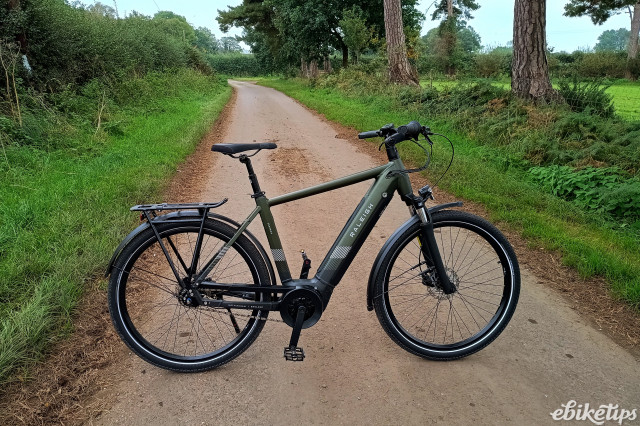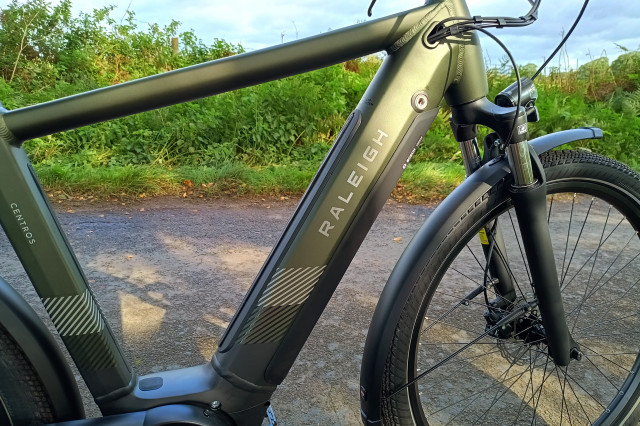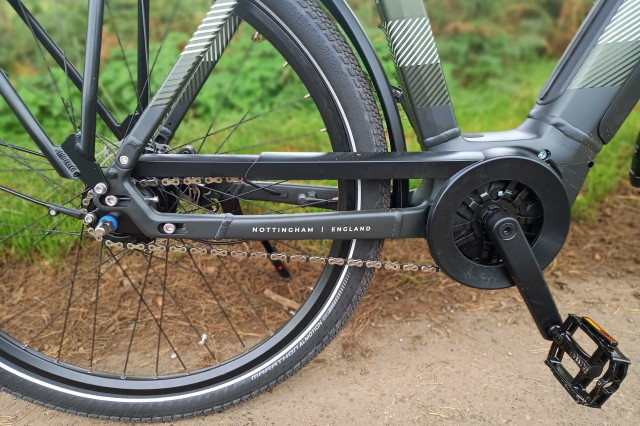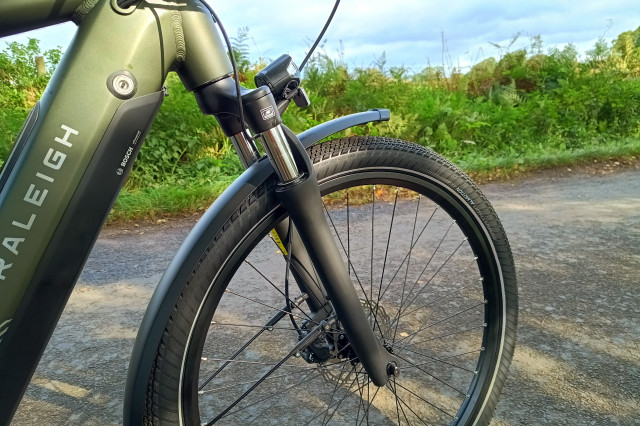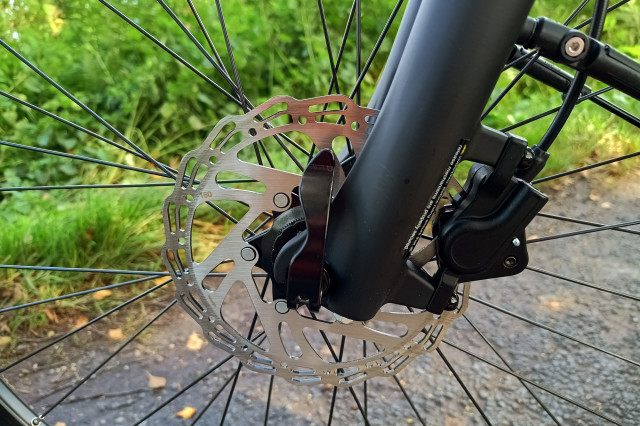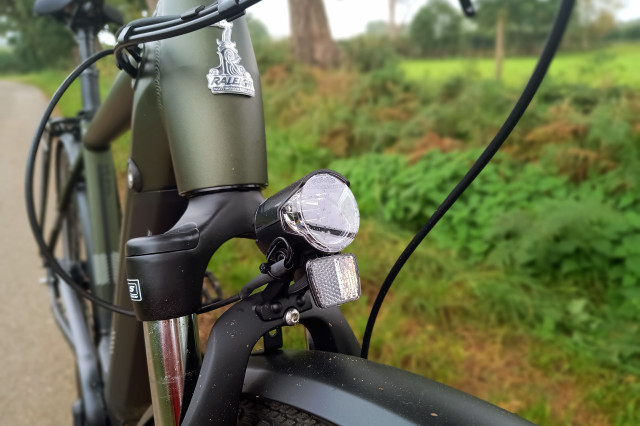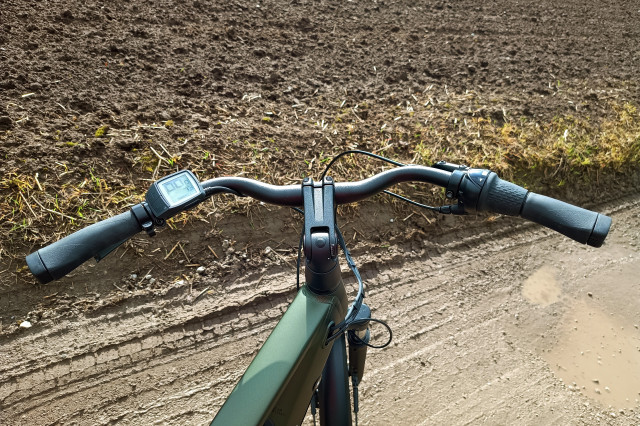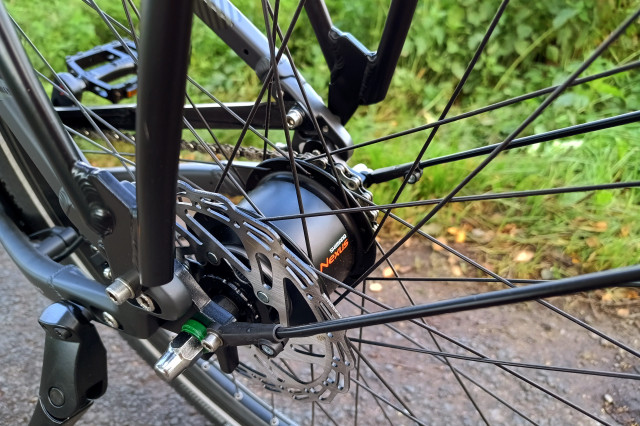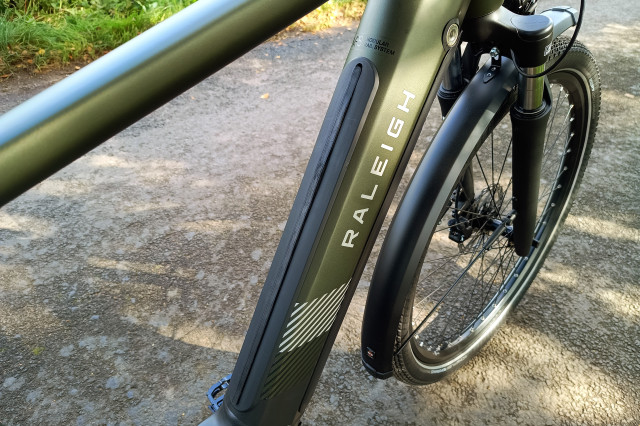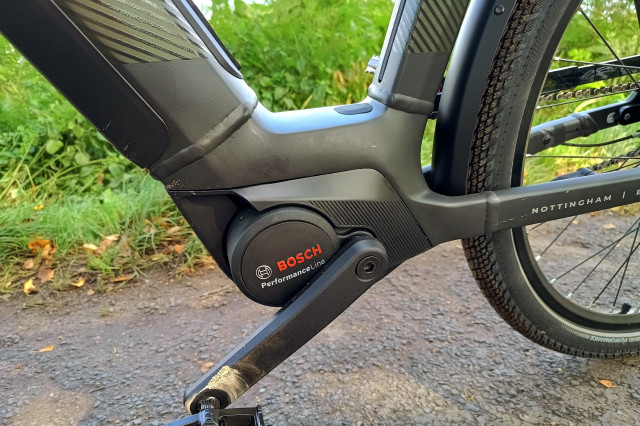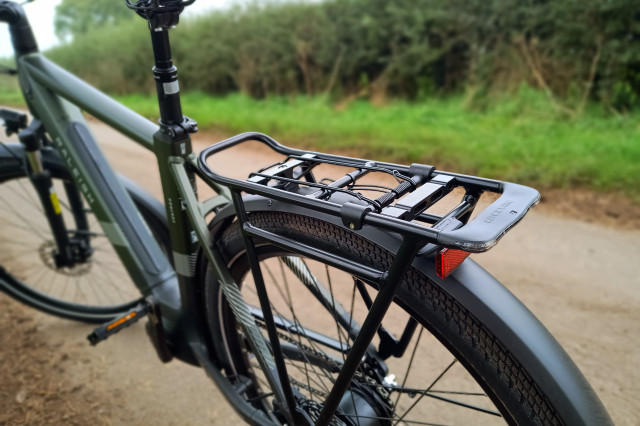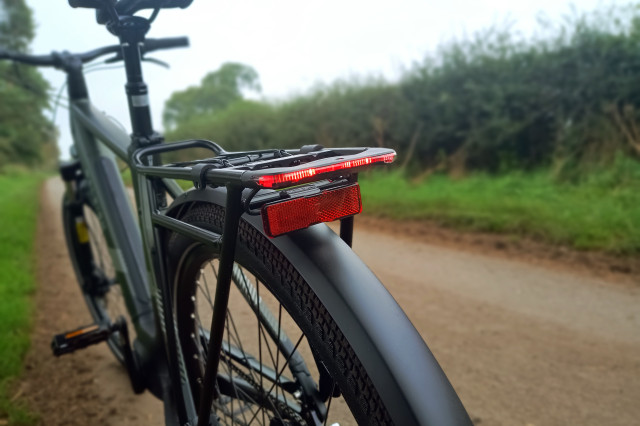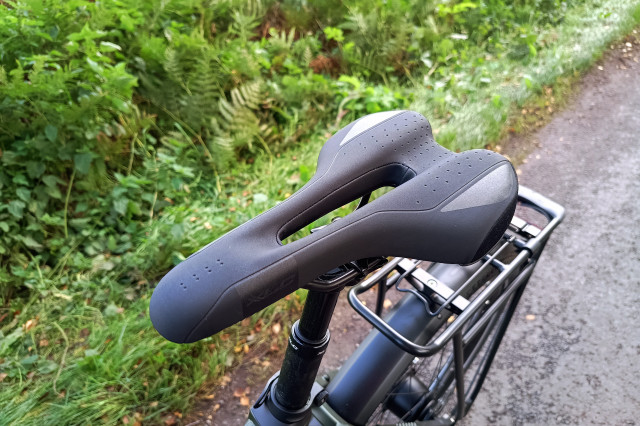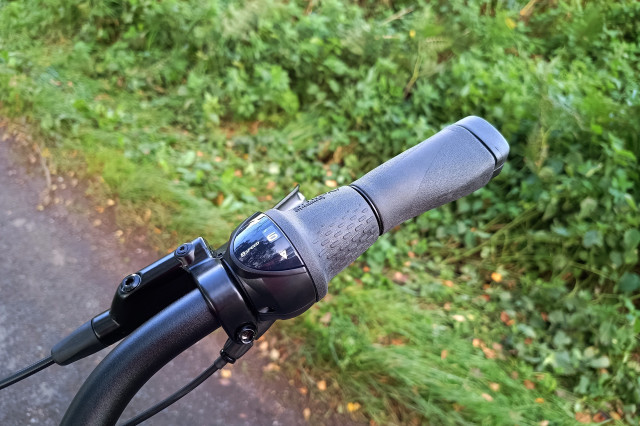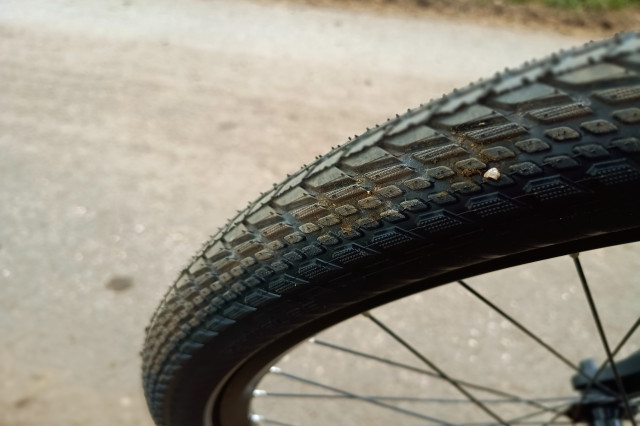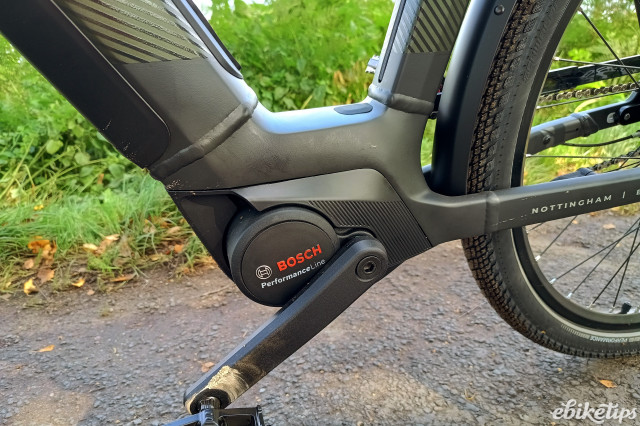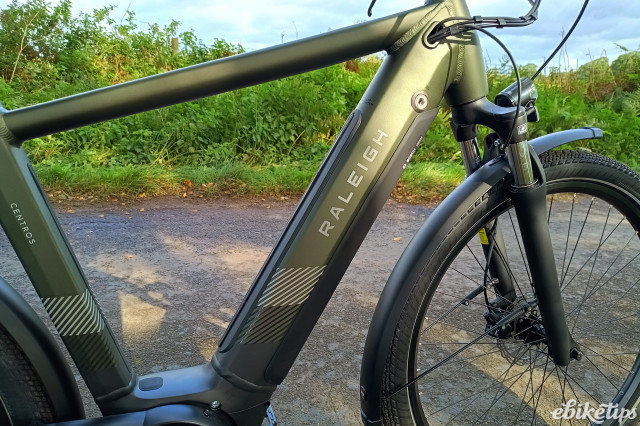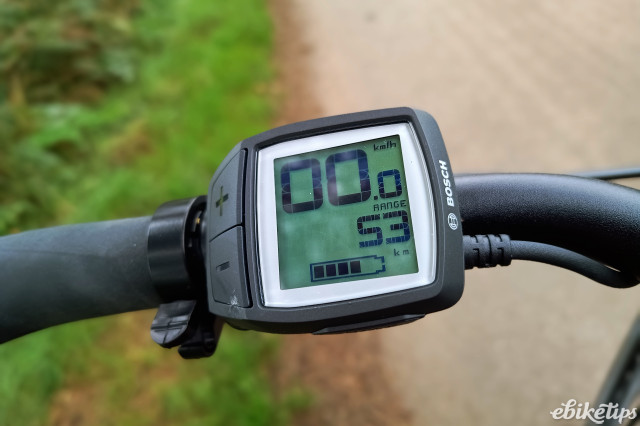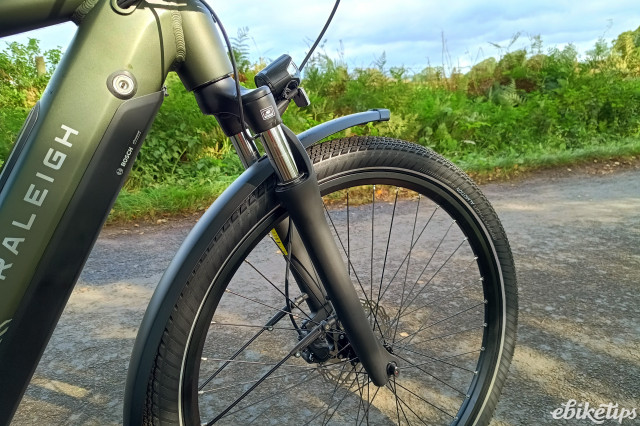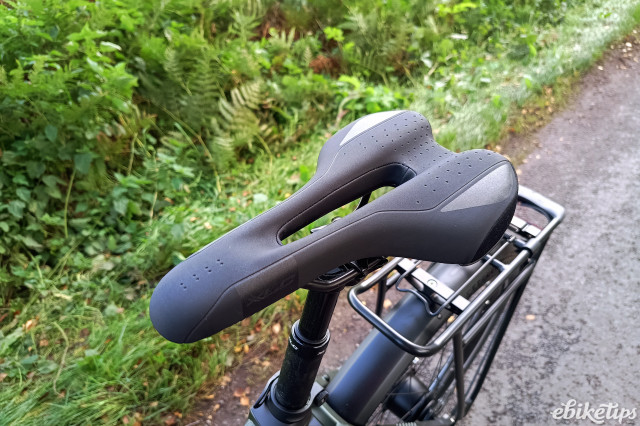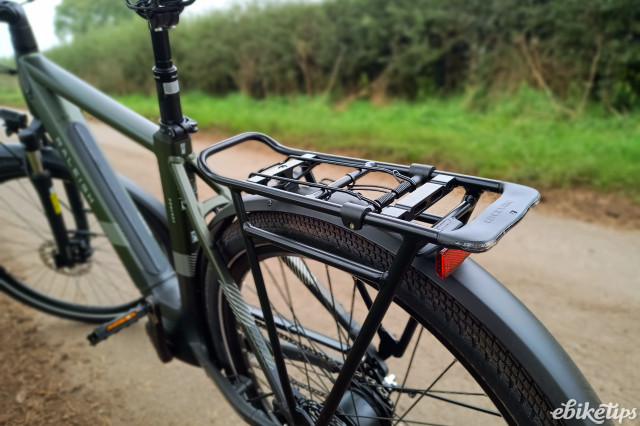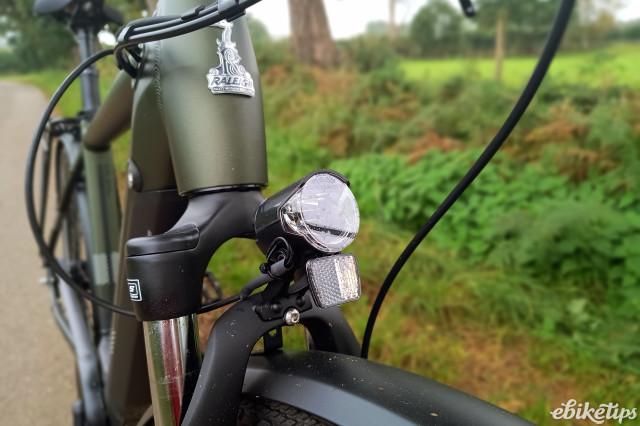Raleigh Centros Hub Gear
Overview
- Bosch Performance Line motor
- Sizeable 625Wh battery
- Low maintenance hub gears
- Can be difficult to change down a gear once you're climbing
- Saddle won't be to everyone's taste
At first glance, the Raleigh Centros seems built for urban comfort and practicality, but with a Bosch mid-motor, wide tyres and suspension, it’s pretty capable out of town too. Throw in a rack, mudguards and hub gears and you’re looking at an e-bike that’s easy to live with and covers a lot of bases.
The Centros is actually billed by Raleigh as being for off-roaders, trail-lovers and bikepackers, as well as – rather more unexpectedly – “paddle-boarders”.
It’s a leisure e-bike is what they’re trying to say; a practical all-rounder that could be put into service for commuting or popping to the shops, but is perhaps chiefly for longer leisure rides.
It’s available with either a conventional or step-through frame and with either hub or derailleur gearing.
Power assistance
The Raleigh Centros is built around our old favourite, the Bosch Performance Line mid-motor, which we picked out as being one of the best all-round mid-drives the last time we updated our guide to e-bike motors.
It’s a smooth motor and pretty quiet, but with plenty of grunt (up to 65Nm of torque) to get you up hills.
As it’s a mid-motor, it works just as efficiently at low speeds, such as when you’re on steeper gradients and need assistance the most. It isn’t light though and combined with the 625Wh battery, that results in quite a heavy bike (28kg).
The motor is not, in this case, paired with the Smart System, Bosch’s latest and seemingly ever-expanding software suite, but there’s a case for saying that’s not really such a big negative.
While you won’t benefit from over-the-air software updates and the resultant digital future-proofing, this older system (officially and clunkily labelled Bosch eBike System 2) does keep things a fair bit more accessible. There’s no fiddling with apps and no need to pair your phone with your bike. You can just get on and ride.
Similarly, the Purion display/controller is nice and straightforward. There’s a button to increase assistance level and a button to move down, while the screen typically shows your speed, assistance level (Eco, Tour, Sport or Turbo) and estimated remaining range. You can also switch to an odometer or trip counter instead of seeing the assistance level – although that’ll still flash up whenever you change.
Personally, I quite like the bare bones nature of it – although the fact that it’s unavoidably positioned at a somewhat jaunty angle thanks to the curved Centros handlebars bugged me very slightly but persistently.
The range estimate in particular is very useful and it updates instantly whenever you change up or down an assistance level, which is very handy for getting a feel for how much power each uses.
The ride
The Raleigh Centros is a comfortable bike. The wide 650B x 55c Schwalbe Marathon Almotion tyres arguably provide cushioning enough for the kinds of terrain you’ll likely be tackling on a bike like this. However, Raleigh have also included a Suntour Nex suspension fork offering 63mm Travel and an XLC suspension seatpost.
We very rarely feel that suspension forks are necessary on anything other than an electric mountain bike, but this one’s agreeable enough. It’s a bit squidgy if you ride out of the saddle, but this is a big mid-motor e-bike, so you’ll almost never be doing that.
My colleague Rebecca didn’t get on with the suspension seatpost on this bike’s sibling, the Raleigh Motus Tour, but perhaps because I’m bigger and heavier, I quite liked it.
I was less fond of the Shimano Nexus 8-speed hub gears however.
Hub gears are very appealing because everything’s neat and clean and they don’t need much maintenance. You can also change gear when you’re not moving, which can be very handy.
The flipside is that they don’t really shift so well under load and this was my gripe.
The majority of the time, gear changes – via the rotational Revoshift shifter - were smooth and unremarkable. The exception was when I found myself overgeared when already riding uphill.
It is the nature of hub gears that if you find yourself in this situation and losing speed, it becomes very hard to change down. You essentially need to stop pedalling for a moment and this can result in a significant loss of momentum when you’re already moving at a low speed.
Some will say you just have to ride differently and try and foresee the need to change down, but the simple truth is that sometimes you round a corner and the hill you’re scaling steepens unexpectedly. In this situation, you’ll have to factor the loss of momentum in, perhaps changing down a couple of gears when you’d ordinarily only change down one.
I will however say that my partner rode the bike at lower assistance levels and lower speed and didn’t really have the same problem, so it might just be a product of riding style. She tends to pedal at a far lower cadence than me too. (She did however strongly dislike the saddle – although riding a bike that was too big for her probably didn’t help in that regard.)
It’s worth emphasising here that even if changes in gradient trouble you, the actual steepness itself shouldn’t be a problem. Once you’re in the appropriate gear, the Bosch Performance Line will do its stuff.
I tended to do most of my riding in the middle two assistance modes – Tour and Sport – shifting up to Turbo only for steeper or more protracted inclines. Eco is best for slower, more efficient riding when you’re looking to eke out maximum range.
It’s suggested you could get 130 miles out of a single charge, but you’d have to nurse it a bit to achieve that.
I had two bars left out of five after 65 miles of riding. I'd guess there was another hour and a bit of riding beyond that, but I wussed out and recharged as it's not really a bike you'd want to ride unassisted.
Usefully, the battery can be popped out from the down tube and charged separately.
Extras
Beyond the motor system, the Centros also comes with hydraulic disc brakes, full SKS mudguard and a pannier rack.
The front light is decent enough, while the rear light, integrated into the rack, is perhaps a bit feeble so you'd probably want to supplement it.
There’s also a built-in modular rail system for click-in accessories. Options include a bottle, a bag, a lock or even an extra battery to extend the bike’s range.
Value and competition
The Raleigh Centros Hub Gear comes in at £2,999, while the derailleur version is £100 cheaper. This shapes up as a fairly typical price for a mid-motor leisure bike like this.
The Canyon Precede:ON 7 is a few bob more at £3,349. Like the Centros, it has a Performance Line motor, but only with a 500Wh battery. You do however get a low maintenance belt drive, which is teamed with Enviolo hub gears.
Another to look at might be the Volt Infinity, which costs £2,999 with Alfine automatic hub gears, a Shimano STEPS mid-motor and a 504Wh battery.
Merida’s Espresso City 400 EQ also uses a Shimano motor. It too is currently selling for £3,000, this time with derailleur gears.
Finally, while the Specialized Turbo Como 3.0 now has an RRP of £3,000, it’s actually listed at £2,400 at the time of writing. This one’s built around a Brose mid-motor with Enviolo ‘stepless’ hub gearing and a belt drive – although again the battery is smaller at 530Wh.
Conclusion
The Raleigh Centros is built well, the motor’s great and the range is more than decent. All in all, it’s a solid bet, although I would recommend getting a test ride of both the hub gear and derailleur versions (ideally up a hill) to see which you’re more comfortable with.
1 comments
This is an excellent bike. No issues with the rear hub for me - smooth, you just need to get used to its nuances. For commuting in potholes, this takes it in its stride. The only worry is if you get a flat in the back, not sure a hub makes it easy to change.

